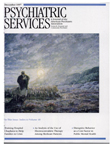Disruptive behavior and the determinants of costs in the public mental health system
Abstract
Efforts to increase the cost-effectiveness of public mental health systems are hindered by inadequate information about the determinants of use and cost. This paper reviews empirical research and theory suggesting that costs in the public health system are affected more by the disruptive behavior of persons with severe mental illness than by their age, sex, race, and diagnosis, which have been the focus of most economic studies. The author proposes modifications of traditional theories of health service use to explicitly account for the role of disruptive behavior in determining public mental health system costs. He describes a help-seeking pathway in the public mental health system in which the decision to seek treatment is initiated not by the mentally ill person but by others affected by the person's disruptive behavior. This "other-determined" pathway into treatment is contrasted with the self-determined pathway in which an individual with distressing symptoms makes a rational choice to seek help. Empirical research consistent with the other-determined perspective will help target clinical interventions and system reforms to the factors responsible for high-cost mental health care and will improve the ability to predict resource use from observable clinical characteristics of consumers.



